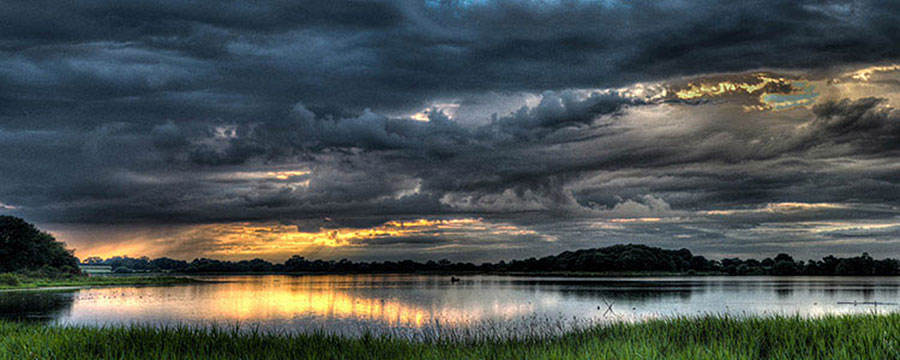How Do Daily Weather Forecasts Relate To Hourly Forecasts? It Depends.

(Inside Science) -- I've been wondering how weather forecasts fit together -- particularly the hour-by-hour and entire-day forecasts -- so I got in touch with Peter Neilley, the senior vice president for The Weather Company's global forecasting services. He is responsible for the team of meteorologists and software engineers that, as he put it, encode the science of meteorology into computer programs to produce forecasts. Those forecasts reach far and wide, from The Weather Channel and weather.com, to their many syndication partners, including Apple, Yahoo, and local TV stations.
Forecasts from The Weather Company and others can provide information about the chance of precipitation on pretty short time scales. In addition to showing that there's, say, a 50 percent chance of rain tomorrow, your favorite weather app or website might further detail that there's a 10 - 20 percent chance of rain beginning at 3 p.m., and it should remain at that level for a few hours. On another day, the forecast might suggest a 50 percent chance of rain, but with a 40 or 50 percent chance of rain for each of several hours.
In each situation you have a 50 percent chance of rain, but the hourly forecasts look completely different. How can each day have the same total probability of rain?
The answer, said Neilley, is rooted in a mathematical concept called independence.
Independence explains how all the hours are connected to each other. In baseball, a batter's at-bats are generally considered independent from each other. So, if a hitter has a .300 average and came up to bat four times in a single game, the chance that he would get at least one hit in a game would be computed by taking the chances of getting out in any one at-bat (0.7), multiplying that times itself four times, and subtracting that total from one.
Multiplying 0.7 times 0.7 times 0.7 times 0.7 equals 0.24. One minus that amount equals 0.76, making the chance of getting at least one hit in the game about 76 percent. This is like the first example above, where a relatively small chance of rain in an hour adds up over time to be a much larger total chance of rain in a day.
Now let's say you are going to go away for a multi-day vacation to one of three possible locations. The chance that you'll be in one vacation paradise on Monday is 33 percent. It's also 33 percent on Tuesday. But the total probability that you'll go to that location is also 33 percent. This is more like the second weather example. Each day is dependent upon the other, because in the end, you're going to wind up in only one place.
According to Neilley, weather forecasts frequently exist at different points on the continuum between independent and dependent.
"Weather has both of those things going on. In many cases, weather events during the course of a day are all connected to each other very tightly. In other days they are very independent of each other," he said.
For independent -- think thunderstorms. There might be a 10-15 percent chance of a thunderstorm developing and producing showers in any given hour, but in that day there would be a much larger cumulative chance of receiving rain.
For dependent -- think hurricanes. If a hurricane hit Florida, he said it would affect the weather for that entire day. "But there's only a 1 in 5 chance that it's going to hit Florida. If it does," he said, "from dawn to dusk it's going to be windy and rainy."
Neilley added that in the summer, precipitation probabilities for an hour tend to be much lower than the probabilities for the day -- meaning they are generally more independent. In the winter, he said, hour-to-hour weather events are much more connected to each other, and therefore hourly forecasts will be closely related to daily projections.

